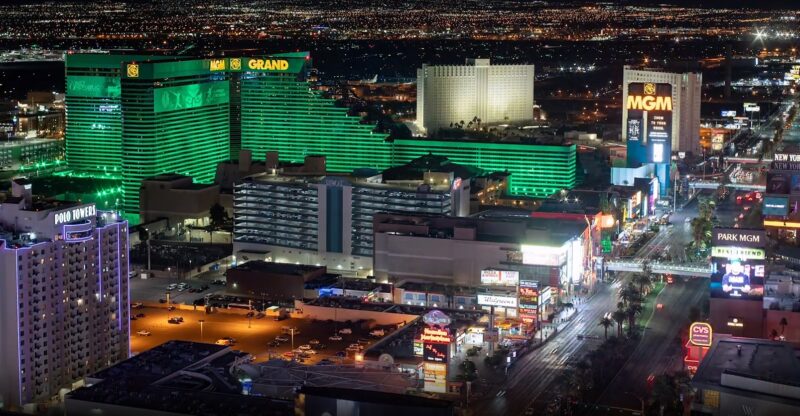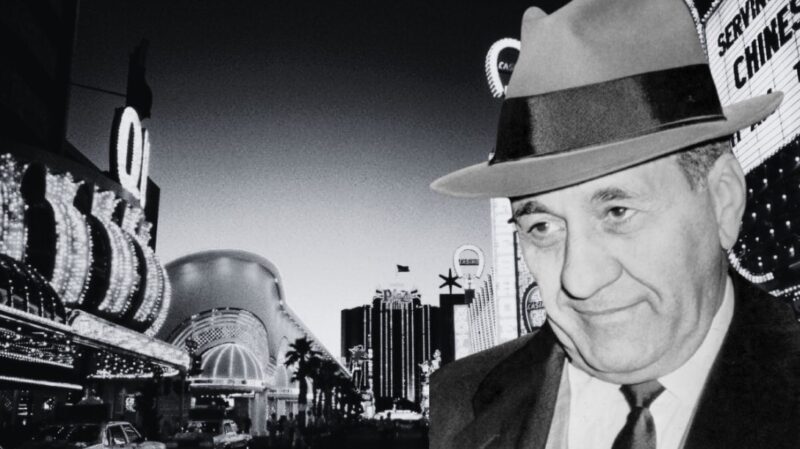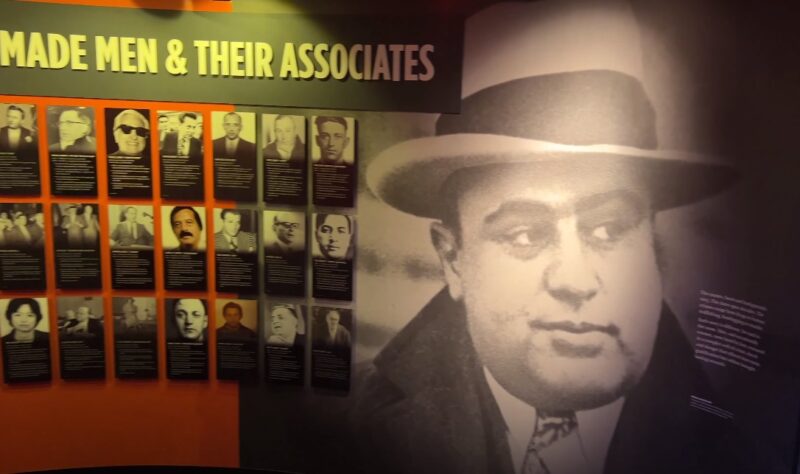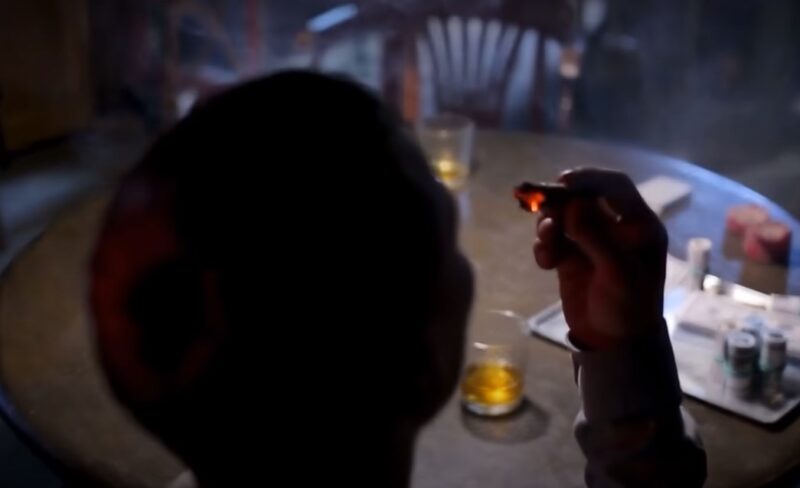Las Vegas is a city that has been shaped by the influence of organized crime, from its early days as a gambling oasis to its modern status as a global entertainment destination. But what happened to the mobsters who once ruled the Strip and the casinos?
Are there still any traces of their legacy in Sin City? This article will explore the current state of the mob and its history in Las Vegas, and whether it still has any ties to the city’s underworld.
The Current State of the Mob

The answer to the question “Are There Still Mobsters in Las Vegas?” is both yes and no. Yes, there are still organized crime groups in Las Vegas, but they are not as powerful or active as they were in the past.
Diminished Visibility
The mob is no longer as visible in Las Vegas, and its activities are more focused on white-collar crime and infiltration of legitimate businesses. According to some experts and authorities, the Italian Mafia’s presence in Las Vegas ended in the mid-1980s, and the last mob-related trial and hit in the city occurred in the late 1990s.
Perspectives on the Mob’s Eradication

The experts argue that the mob has been replaced by more sophisticated and diverse criminal organizations, such as drug cartels, street gangs, and cybercriminals, who operate in different ways and sectors.
They also claim that the mob has no longer any influence or interest in the gaming and entertainment industries, which are now dominated by legitimate and regulated corporations and entities.
Lingering Ties and Subtle Influence
However, according to some others, the mob still has some ties and connections to Las Vegas, although they are more subtle and discreet than before. They suggest that some mob-connected individuals and businesses still operate or visit the city, but they are not involved in the street crimes or the casino skimming that characterized the mob’s heyday.
While outright mob influence in Las Vegas has faded, some individuals and businesses still navigate a murky world of underground dealings, including money laundering, loan sharking, and financial exploitation. For those who fall victim to fraud or suffer harm due to criminal activity, seeking legal representation is critical. Wooldridge Law injury lawyers provide expert legal support for residents and visitors affected by negligence or crime-related incidents. Whether dealing with financial losses, personal injury, or wrongful harm, having a dedicated legal team ensures victims get the justice and compensation they deserve.
The Rise and Fall of the Mob
From the 1940s to the 1980s, the mob in Las Vegas epitomized both glamour and corruption, controlling the city’s gambling and entertainment with illicit gains. Their influence, however, diminished by the mid-1980s.
The Mob’s Arrival and Investment
The mob’s involvement in Las Vegas began in the 1940s when notorious gangsters like Bugsy Siegel, Meyer Lansky, and Frank Costello saw the potential of the desert town as a lucrative source of income and a safe haven from the law. Mobsters invested in building and operating casinos, hotels, and nightclubs, and used their connections and muscle to control the gambling, entertainment, and vice industries.
They also skimmed millions of dollars from the casino profits, evading taxes and regulations.
Peak Influence and Ties to Power
The mob’s influence reached its peak in the 1960s and 1970s when figures like Sam Giancana, Tony Accardo, and Tony Spilotro ran the show in Las Vegas and had ties to politicians, celebrities, and businessmen.
However, the mob’s reign in Las Vegas also faced challenges and threats, from rival gangs, law enforcement, and the government.
Decline and Loss of Power

The mobsters were often involved in violent conflicts, murders, and scandals, which attracted the attention of the media and the public. The FBI and the Nevada Gaming Commission launched investigations and crackdowns on the mob’s activities and exposed their corruption and crimes.
The government also passed laws and regulations that made it harder for the mob to operate and launder money in Las Vegas, such as the Racketeer Influenced and Corrupt Organizations Act (RICO) and the Corporate Gaming Act. The mob also faced competition from legitimate corporations and investors, who bought out and renovated the casinos, and introduced more professionalism and transparency to the gaming industry.
By the mid-1980s, the mob’s presence and power in Las Vegas had declined significantly, and many of the mobsters were either killed, arrested, or forced out of the city.
The Legacy and the Myth of the Mob

Despite the mob’s downfall in Las Vegas, the city still retains some traces and memories of its mobster past. Some of the casinos and hotels that were built or owned by the mob still stand today, such as the Flamingo, the Tropicana, and the Stardust, although they have been renovated and modernized over the years.
Some of the mobsters’ stories and artifacts are also preserved and displayed in museums and attractions, such as the Mob Museum, the Neon Museum, and the Mob Attraction. These places offer visitors a glimpse into the history and the culture of the mob in Las Vegas, and how it shaped the city’s identity and image.
Myths and Legends
However, the mob’s legacy in Las Vegas is also surrounded by myths and legends, which often exaggerate or romanticize the mobsters’ roles and deeds. The mob in Las Vegas has been the subject of many books, movies, and shows, such as The Godfather, Casino, and The Sopranos, which portray the mobsters as glamorous, charismatic, and powerful figures, who lived by their own code of honor and loyalty.
These representations often overlook or downplay the darker and more brutal aspects of the mob’s activities, such as violence, corruption, and exploitation.
Cultural Phenomenon and Marketing Tool
The mob in Las Vegas has also become a part of the city’s marketing and tourism, which capitalize on the mob’s mystique and appeal, and cater to the public’s fascination and curiosity. The mob in Las Vegas has thus become a cultural phenomenon, a myth, and a brand, that transcends its historical reality.
FAQ
How has the role of the city’s organized crime changed in the digital age?
In the digital age, organized crime in Las Vegas has shifted towards cybercrime and sophisticated financial schemes. Traditional street-level activities have been supplemented by online fraud, identity theft, and cyber extortion, reflecting a broader trend in global organized crime.
Are there any educational programs or tours in Las Vegas focused on its mob history?
Yes, Las Vegas offers educational programs and tours that delve into its mob history. The Mob Museum, for instance, provides interactive exhibits and educational experiences about the history of organized crime in Las Vegas and beyond.
Has the decline of the mob affected the local tourism industry?
The decline of the mob has not negatively impacted Las Vegas’s tourism. Instead, the city has successfully rebranded itself as a family-friendly entertainment destination, while also capitalizing on its mob history as a point of cultural interest.
What legal and regulatory changes helped reduce the mob’s influence in the city?
Key legal and regulatory changes included stricter casino licensing and financial reporting requirements, enhanced FBI and police enforcement, and the implementation of laws like the RICO Act, which targeted organized crime’s financial operations.
How do modern casinos ensure they are free from mob influence?
Modern Las Vegas casinos employ rigorous financial audits, cooperate with law enforcement agencies, adhere to strict regulatory standards, and use advanced security and surveillance technologies to ensure they remain free from mob influence.
Are there any notable movies or documentaries accurately depicting the mob’s history?
Several movies and documentaries offer accurate depictions of the mob’s history in Las Vegas, such as “Casino” (1995), which is based on real events and characters, and documentaries like “Mobsters: Las Vegas” which provide historical insights into the mob’s activities in the city.
Closing Thoughts
Las Vegas, once a mob-controlled gambling oasis, has evolved into a global entertainment hub. While the mob’s overt presence has faded, their legacy lingers in Sin City. Organized crime still exists, but its influence is less pronounced, shifting towards white-collar crime and legitimate business infiltration.
The Italian Mafia’s visible presence ended in the mid-1980s, with the last mob-related events in the late 1990s. Today’s criminal landscape in Vegas is more diverse, with drug cartels, street gangs, and cyber criminals.
Some believe the mob maintains discreet connections in Vegas, subtly influencing certain aspects. Despite their diminished role, the mob’s historical impact on Las Vegas remains a cultural fascination, preserved in museums and popular media, blending myth with reality.

